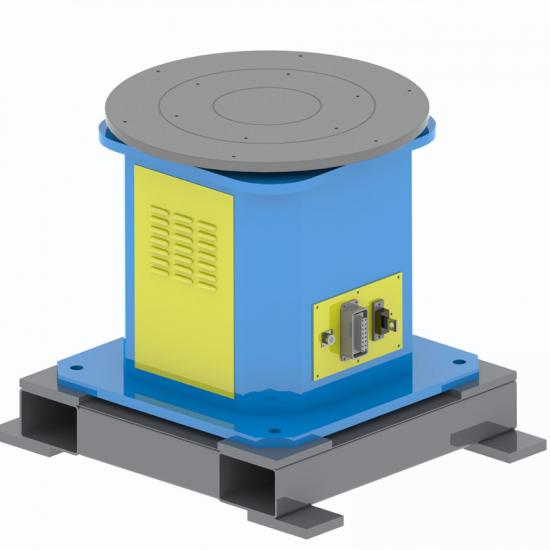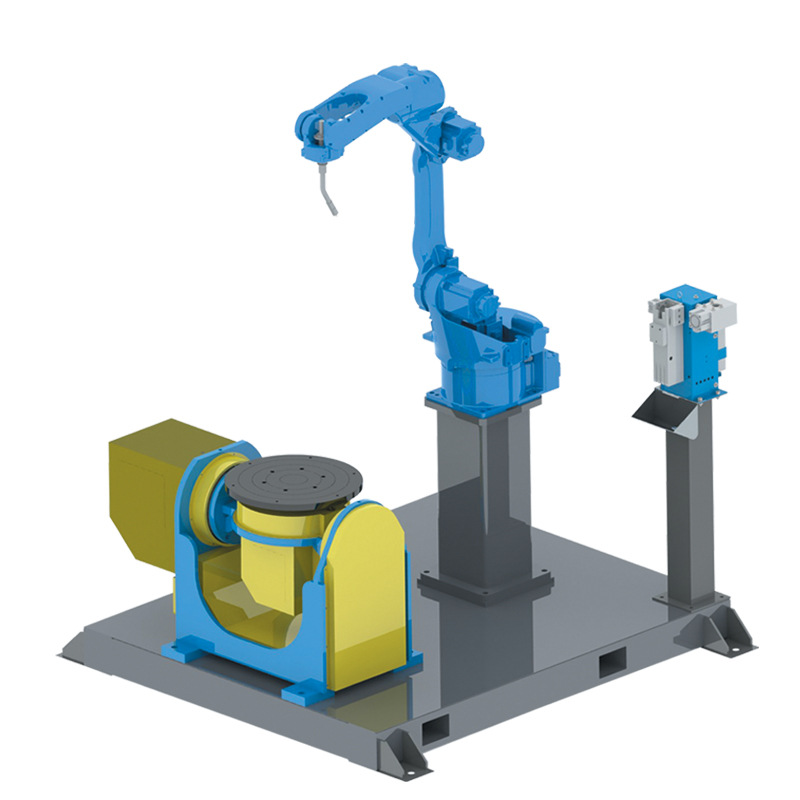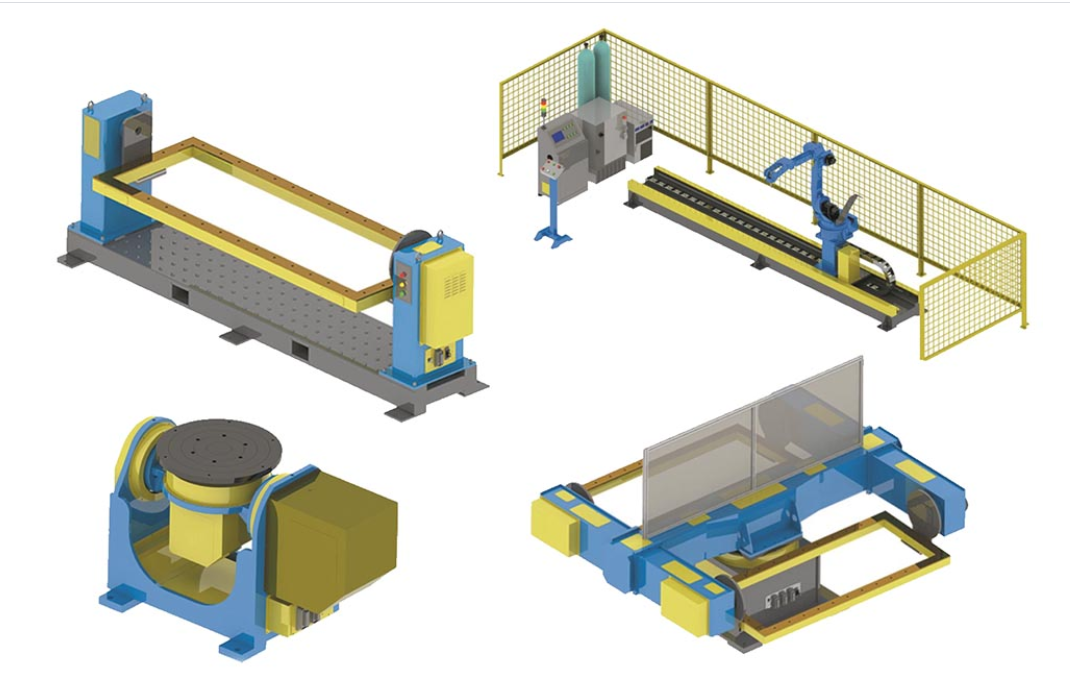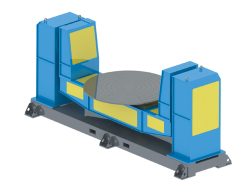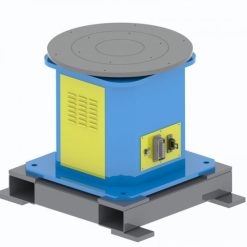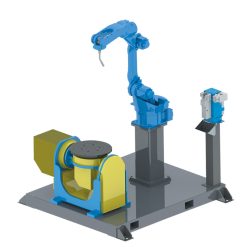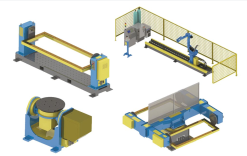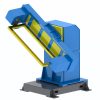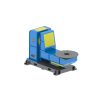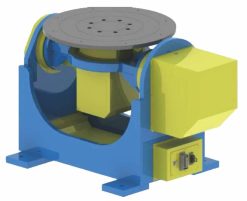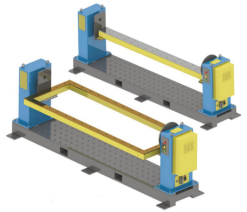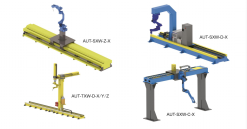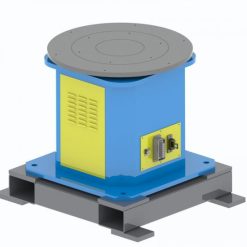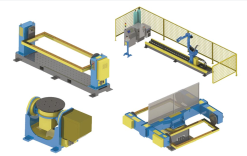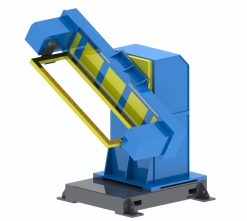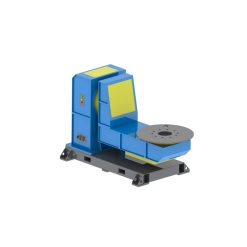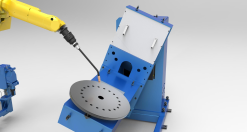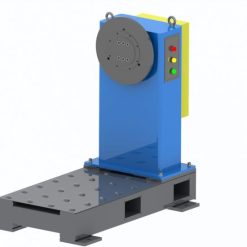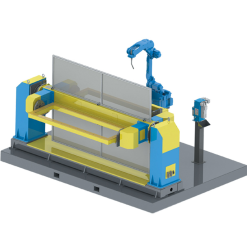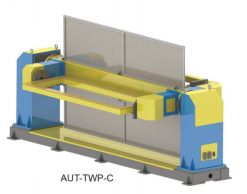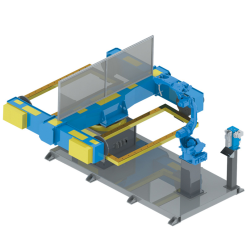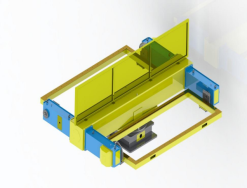Description
Two Axis U types rotary table welding servo robot positioner DWP-U-1000
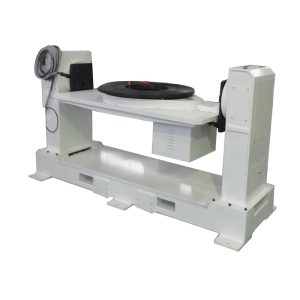
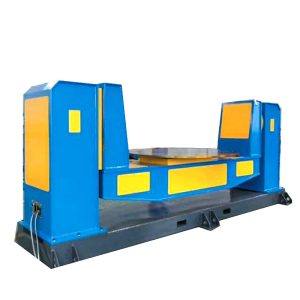
Two-axis servo positioner is mainly composed of a welding frame, rotary platform, AC servo motor and RV precision reducer, rotary support, conductive mechanism, protective shield, and electrical control system.
The overall welding frame is made of high-quality profiles welded, annealed and stress relieved, and processed by professional mechanical processing, which can ensure the high precision of processing and use of key positions, and the surface is sprayed with anti-rust appearance paint, which is beautiful and generous, and the color can be customized according to customer requirements.
The rotary platform is made of high-quality section steel with professional machining treatment, and the surface is processed with standard threaded holes for installation of positioning tools and blackened and anti-rust treatment.
AC servo motor with Japanese RV reducer is selected as the power mechanism, which can ensure the stability of rotation, accurate positioning, long durability, and low failure rate.
The conductive mechanism adopts brass as the conductive mechanism, which can play a good conductive effect, and the conductive base adopts overall insulation, which can effectively protect the servo motor, robot, welding power source, etc.
The electrical control system uses Japanese OMRON PLC to control the positioner, which has stable performance and low failure rate, and the electrical components are all famous brands at home and abroad to ensure the quality and stability of use.
Advantages
- Improved welding quality: Robot positioners allow for precise and consistent positioning of the workpiece, which can lead to better weld quality and reduced defects.
- Increased productivity: By automating the positioning of the workpiece, robot positioners can greatly increase productivity by reducing downtime and improving cycle times.
- Reduced labor costs: Robot positioners can significantly reduce the need for manual labor in welding operations, which can help to reduce labor costs and increase efficiency.
- Improved safety: Robot positioners can help to improve safety in welding operations by minimizing the need for manual handling of heavy or awkward workpieces, reducing the risk of injury to workers.
- Flexibility: Robot positioners are highly flexible and can be programmed to handle a wide range of workpieces, making them ideal for use in a variety of welding applications.
- Consistency: Robot positioners can ensure consistent welding results by maintaining the same angle and position for each weld, reducing the likelihood of defects or inconsistencies in the finished product.
- Integration with other equipment: Robot positioners can be integrated with other welding equipment, such as welding robots, to create a fully automated welding system that can greatly improve efficiency and quality.
Specs
Technical Specification:
| No. | Item | DWP-U-1000 | DWP-U-3000 | DWP-U-5000 |
| 1 | Rated load | 1000kg (within axis 2 radius R600mm) | 3000kg (within axis 2 radius R1500mm) | 5000kg (within axis 2 radius R2000mm) |
| 2 | Standard radius of rotary | R600mm | R1500mm | R2000mm |
| 3 | tilting angle of 1st axis | ±180° | ±180° | ±180° |
| 4 | rotary angle of 2nd axis | ±360° | ±360° | ±360° |
| 5 | Rated tilting speed of 1st axis | 17°/S | 17°/S | 17°/S |
| 6 | Rated rotary speed of 2nd axis | 24°/S | 17°/S | 24°/S |
| 7 | Repeated positioning accuracy | ±0.15mm | ±0.20mm | ±0.25mm |
| 8 | Positioner dimension
(L×W×H) |
4200mm×700mm×1800mm | 5500mm×900mm×2200mm | 6500mm×1200mm×2600mm |
| 9 | Standard axis 2 rotary disc | φ1500mm | φ1800mm | φ2000mm |
| 10 | Height of axis 1 rotary center | 1500mm | 1750mm | 2200mm |
| 11 | Power supply | Three phase 200V ±10% 50Hz(with isolation transformer) | Three phase 200V ±10% 50Hz (with isolation transformer) | Three phase 200V ±10% 50Hz (with isolation transformer) |
| 12 | Insulation grade | H | H | H |
| 13 | Weight | about 2200kg | about 4000kg | about 6000kg |
Application
Robotic positioners are used in a wide range of industries that require welding for manufacturing and fabrication processes. Some examples include:
Automotive industry: Robotic positioners are commonly used in the automotive industry for welding car bodies and other components, such as exhaust systems and suspension parts.
Aerospace industry: The aerospace industry uses robotic positioners to weld aircraft components, such as fuselage sections, engine components, and landing gear.
Shipbuilding industry: Robotic positioners are used in shipbuilding to weld large sections of ships, including hulls, decks, and superstructures.
Construction industry: The construction industry uses robotic positioners to weld structural steel components, such as columns, beams, and trusses.
Heavy equipment manufacturing: Robotic positioners are used in the manufacturing of heavy equipment, such as bulldozers, cranes, and excavators.
Energy industry: The energy industry uses robotic positioners to weld pipelines, storage tanks, and other components used in oil and gas production, as well as renewable energy production, such as wind turbines and solar panels.
Manufacturing industry: Robotic positioners are used in a wide range of manufacturing processes that require welding, including the production of appliances, machinery, and fabricated metal products.
In general, any industry that requires welding for manufacturing or fabrication processes can benefit from the use of robotic positioners to increase efficiency, improve quality, and reduce labor costs.
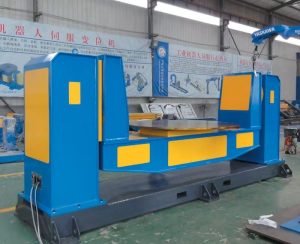
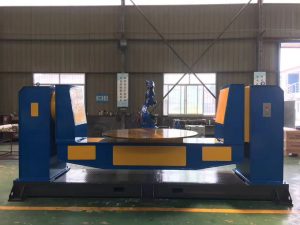
Packing details
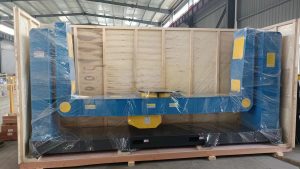

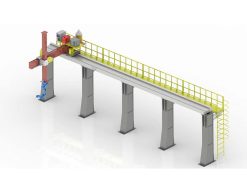 Robot Linear track
Robot Linear track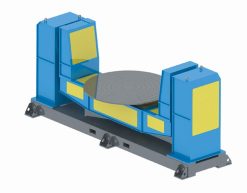 Robot welding Positioner
Robot welding Positioner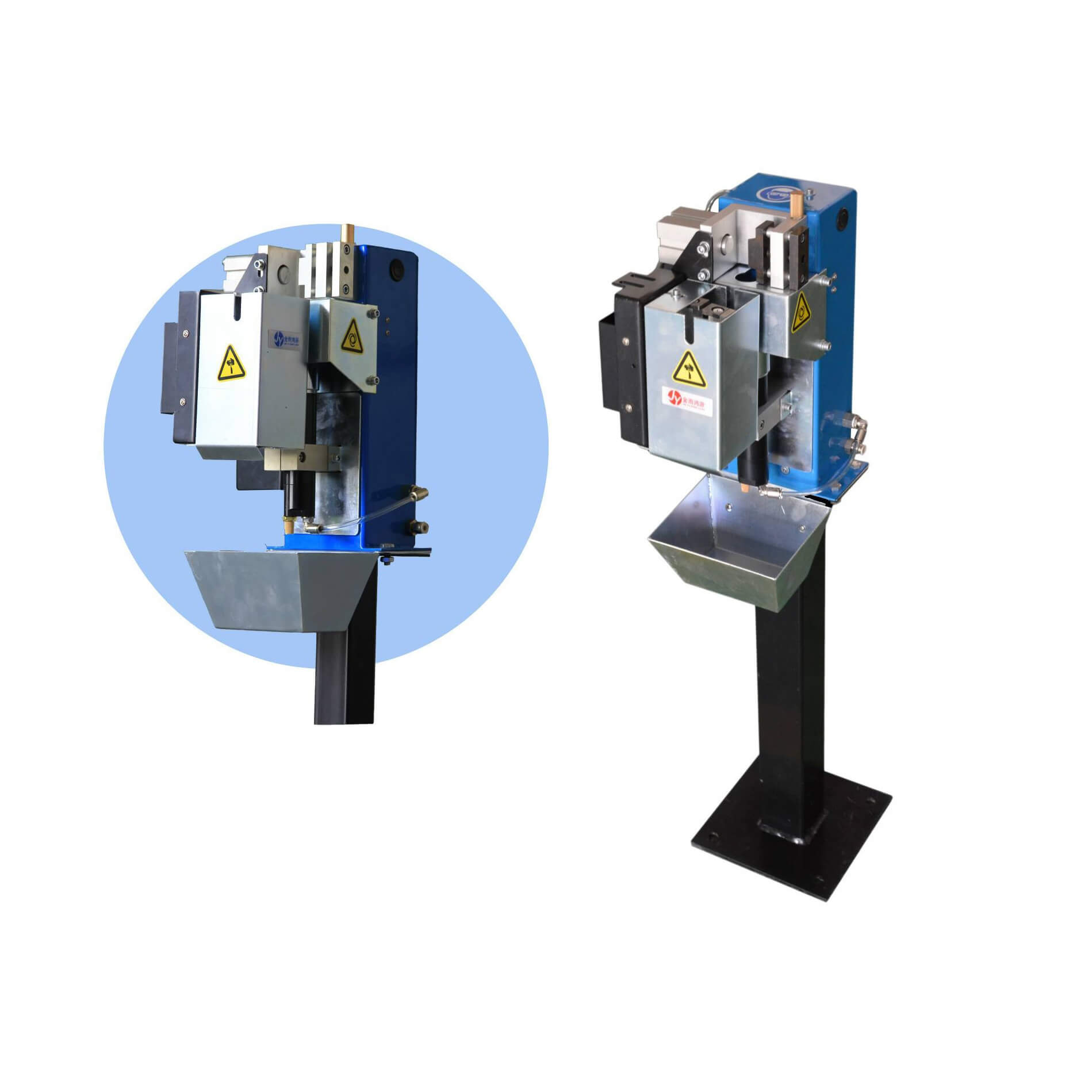 Robot Torch cleaning station
Robot Torch cleaning station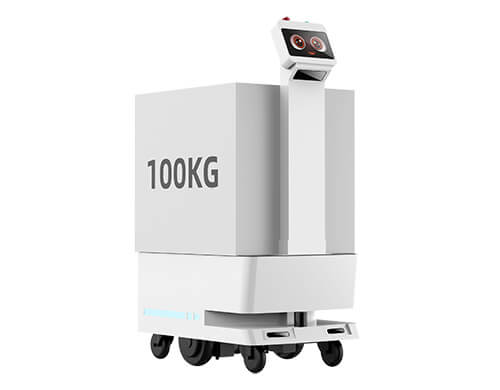 Factory delivery robot
Factory delivery robot
